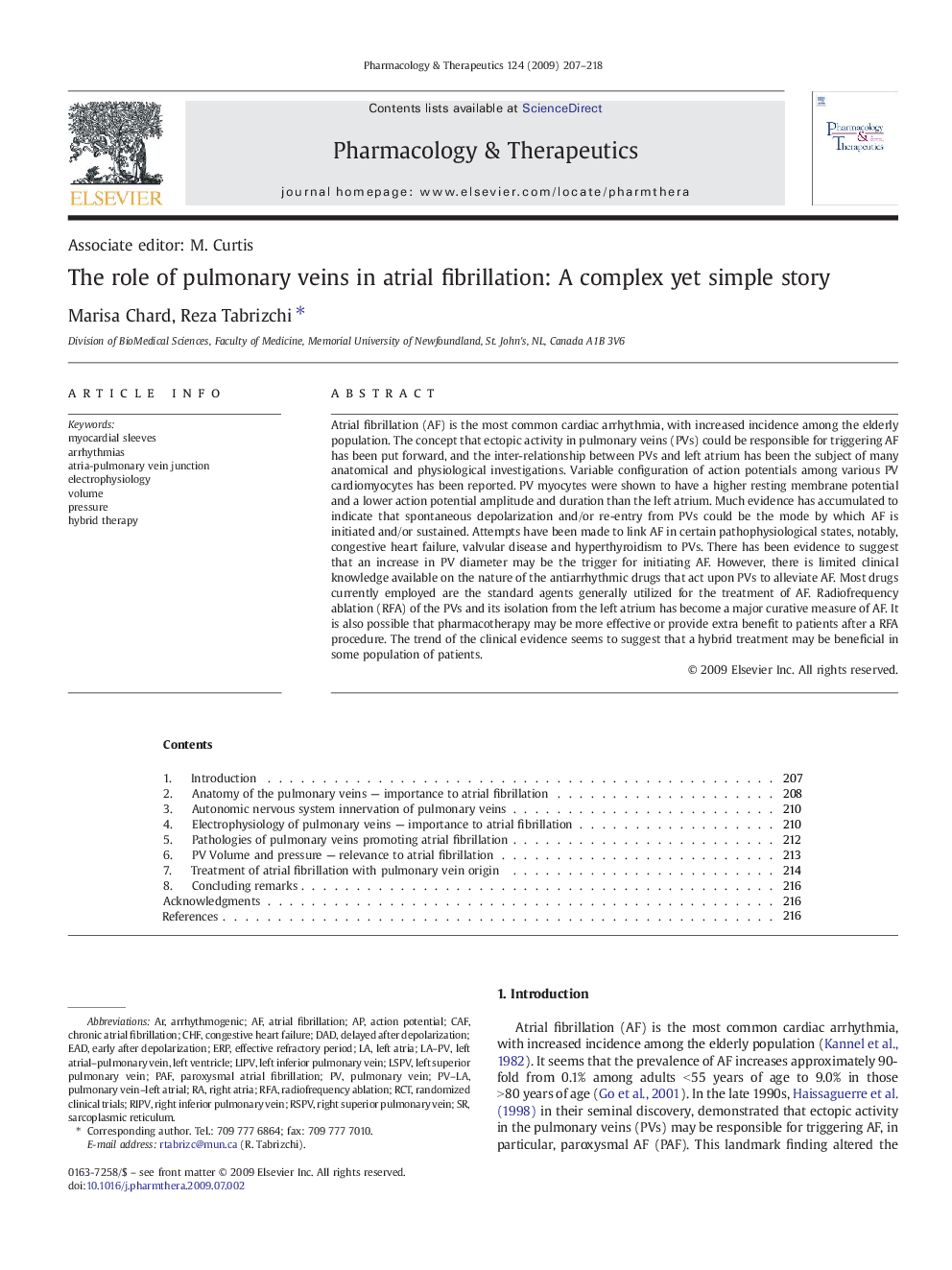| Article ID | Journal | Published Year | Pages | File Type |
|---|---|---|---|---|
| 2563953 | Pharmacology & Therapeutics | 2009 | 12 Pages |
Atrial fibrillation (AF) is the most common cardiac arrhythmia, with increased incidence among the elderly population. The concept that ectopic activity in pulmonary veins (PVs) could be responsible for triggering AF has been put forward, and the inter-relationship between PVs and left atrium has been the subject of many anatomical and physiological investigations. Variable configuration of action potentials among various PV cardiomyocytes has been reported. PV myocytes were shown to have a higher resting membrane potential and a lower action potential amplitude and duration than the left atrium. Much evidence has accumulated to indicate that spontaneous depolarization and/or re-entry from PVs could be the mode by which AF is initiated and/or sustained. Attempts have been made to link AF in certain pathophysiological states, notably, congestive heart failure, valvular disease and hyperthyroidism to PVs. There has been evidence to suggest that an increase in PV diameter may be the trigger for initiating AF. However, there is limited clinical knowledge available on the nature of the antiarrhythmic drugs that act upon PVs to alleviate AF. Most drugs currently employed are the standard agents generally utilized for the treatment of AF. Radiofrequency ablation (RFA) of the PVs and its isolation from the left atrium has become a major curative measure of AF. It is also possible that pharmacotherapy may be more effective or provide extra benefit to patients after a RFA procedure. The trend of the clinical evidence seems to suggest that a hybrid treatment may be beneficial in some population of patients.
